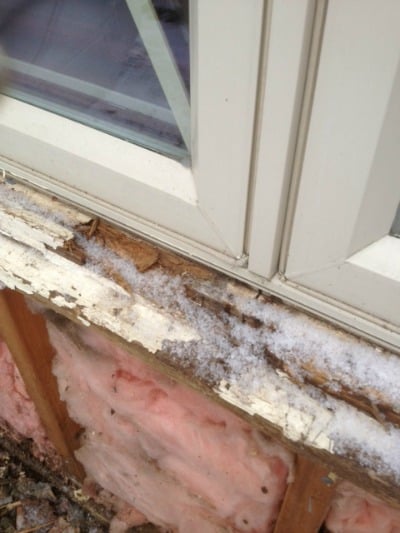Your home is most likely one of your greatest investments. To protect your investment, it is important to be able to spot small problems before they become major expenses. Dry rot is one of those problems.
Since publishing this article, we’ve created a more detailed, up-to-date guide on dry rot—including how it spreads, the different stages of decay, and how our team professionally treats it.
👉 Read our updated article on identifying and treating dry rot
Dry rot is caused by a fungus that feeds on wood and weakens it. Wood becomes cracked and brittle and eventually breaks down. Dry rot is particularly a problem in older homes where wood may not have been treated to prevent rot damage.
Here are three things you should know about dry rot:
1. Where do you look for dry rot?
Dry rot may sound as though it’s misnamed because fungus needs moisture to grow. Look in areas of your home where there is a water source.
Outside, you may find rot where there are damaged gutters or downspouts. Areas to look for dry rot include:
-
Wooden window sills.
-
Where water runs off the roof along a wall.
-
Where a deck attaches to the home.
-
Where a vertical surface meets a horizontal surface.
Look for cracking, splits, and discoloration, which may indicate the presence of rot. Check the roof, especially areas where your home may have had a leak. Dry rot can also occur at points of a structure where wood meets the ground.
Inside, look for dry rot in areas where there may be a leaky pipe, unvented attic space, and damp basements or crawlspaces. Look for areas where drywall is water stained. Other areas to check include:
-
Rim joists, especially on a porch, crawlspace or basement.
-
Where wood meets a masonry floor or wall.
-
The floor around a tub or toilet.
You can check for rot with a pick or screw driver. If it penetrates the wood or the wood flakes easily, there is rot. There may also be rot hidden behind flooring, drywall or siding, which may only be apparent by some discoloration or noticing the material does not feel structurally sound under weight or pressure.
2. What do you do if you find dry rot?
Dry rot is progressive so you will want to make repairs as soon as possible. If you find dry rot, you will first need to stop the source of the moisture. Replace wood that has been structurally weakened, possibly with pressure treated wood. Be sure the problem is properly diagnosed and not mistaken for damage done by carpenter ants.
Once you have found the source of moisture, repair the problem. If there is severe damage, pry off and replace the old wood. Be sure to temporarily support any structure before removing the old wood. Small areas of rot can be repaired with epoxy resin. If the wood is still structurally sound and the source of the moisture has been stopped, you can treat the area with borate, a fungicide, to stop the growth of the fungus and protect the wood from further damage.
3) How do you prevent dry rot?
Rot occurs when there is wood combined with high moisture. To prevent dry rot, there are several things you can do around your house:
-
Properly ventilate and insulate your attic.
-
Properly ventilate crawlspaces.
-
Seal basement and crawlspace floors to reduce ground moisture.
-
Check all wall and roof flashing to ensure water is being directed properly.
-
Check deck and porch flashings.
-
Keep wood siding and trims off the ground and away from the roof and masonry.
-
Make sure all windows and doors are properly flashed.
-
Keep up on painting and caulking.
-
Keep drains and downspouts clear.
If there is considerable runoff near the house, consider installing a rain barrel to collect water or connecting your downspout to a drain tile that can move water a safe distance from your home.
Most importantly, treat dry rot as soon as it is discovered! Untreated dry rot can cause major damage to your home.
More information: What Is Dry Rot? Best Ways to Identify and Treat It

